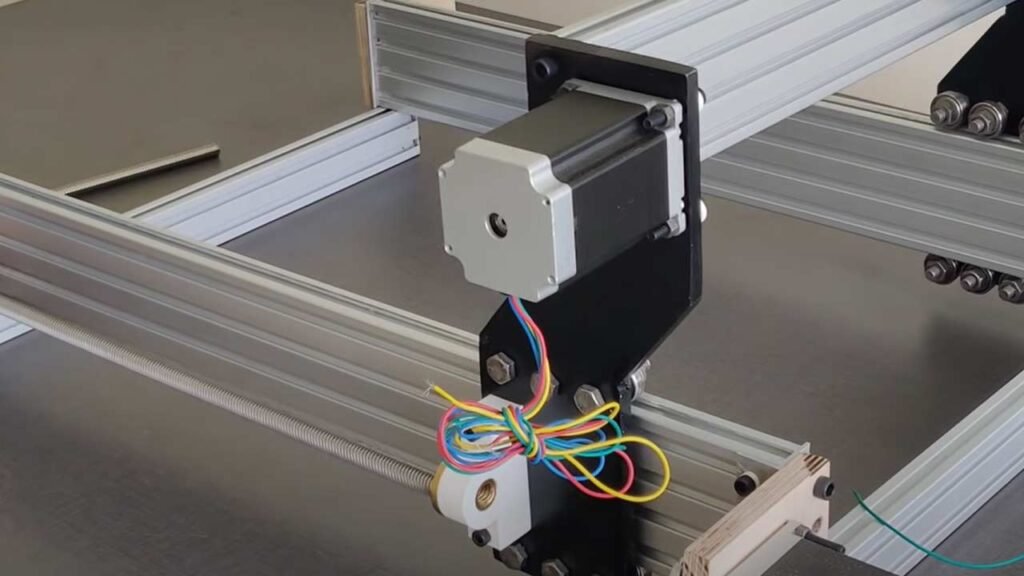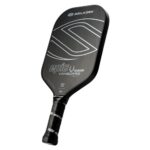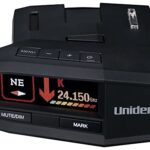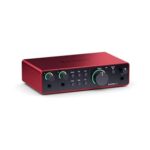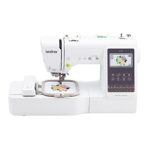Disclaimer: We may earn affiliate commission from qualifying purchases at no extra cost to you.
A CNC machine is a computer-controlled cutting tool used for cutting various materials including wood, plastic, metal and foam. To use the machine you need to first program the instructions into its computer. This includes inputting parameters such as cuts per inch, feed rate and spindle speed.
Once programmed, the user can start up the CNC machine by pressing a button or switch on its control panel. After that they will place their material in position so it can be cut according to the program’s specifications. The operator must then make sure all safety precautions have been taken before using any tools around the area of operation.
Finally they will monitor progress while controlling movement with jog buttons on either side of the screen where commands are displayed and executed during machining operations at whatever location they specify within an assigned work space area.
- Step 1: Familiarize Yourself with the CNC Machine –Before using a CNC machine, make sure you are familiar with how it works
- Read through the user manual and ask questions if necessary
- It is important to understand all of the safety protocols associated with operating a CNC machine before getting started
- Step 2: Create Your Design– Once you have an idea of how your CNC machine works, you can begin creating your design on a computer-aided design (CAD) software program
- This will allow you to create detailed designs that can be used by the machine to cut out parts or engrave them as desired
- The software will also provide instructions for setting up and programming your CNC machine so that it produces accurate results every time
- Step 3: Set Up Your Workpiece– After creating your design in CAD, transfer it onto a workpiece such as wood, metal or plastic depending on what type of material needs to be machined
- Make sure all clamps are securely fastened before starting any cutting operations as this helps ensure accuracy during cutting processes
- Step 4: Program Your Tool Paths– Once the workpiece has been set up properly, use G-code language within CAM software programs to program tool paths into your CNC device’s controller unit and start running simulations within the software’s virtual environment first before actually initiating real cuts or engravings with actual materials inside the workspace of your device itself
- Step 5: Start Cutting/Engraving– When everything looks good in simulation mode, switch over from simulation mode back into “real world” mode and initiate actual cutting/engraving operations according to programmed instructions provided by CAM software through G-code commands sent into controller unit via USB connection cables or other data transmission mediums like Wi-Fi networks etc… Monitor progress closely while working near moving parts since these could potentially cause harm if not handled carefully enough
How to Use a Cnc Machine for Wood ?
CNC machines are a great tool to use when creating wood projects. They offer highly precise cuts and can be used for intricate designs that would otherwise be difficult or impossible to achieve with traditional tools. To get the most out of your CNC machine, it is important to understand the basics of how they work and how to properly set up a project before beginning.
Start by selecting the right bit size for your material, then make sure you have the correct feed rate and depth of cut settings in order to ensure precision and accuracy in your finished product. Additionally, always keep safety in mind while working with any machine; wear protective gear such as goggles and gloves, adhere to all manufacturer guidelines regarding speed limits, and keep your workspace free from clutter.
How to Use a Cnc Machine for Metal ?
CNC machines are a great tool for metalworking. They provide accurate and consistent results with minimal effort, allowing you to quickly create complex parts out of metal. To use a CNC machine for metal, first ensure that the cutting tools are sharp and correctly installed in the spindle.
Then program the machine using CAD/CAM software to determine how deep into the material it needs to cut and what shape is needed. Once you have programmed your instructions into the machine, turn it on and let it run – keeping an eye on progress throughout if necessary. Finally, when finished remove all waste material from around your new part!
How to Learn Cnc Programming ?
CNC programming can be a challenging task for many, but with the proper resources and dedication, it is an achievable skill. To learn CNC programming, start by researching manuals and tutorials online to gain a basic understanding of the concepts involved. Additionally, consider consulting experienced professionals or taking classes in order to obtain further instruction on topics such as G-code and CAD modeling.
With enough practice, you’ll soon be able to write efficient programs that will enable your CNC machine to produce high quality parts.
How to Learn Cnc Machining ?
Learning CNC machining is a rewarding and challenging experience that requires dedication, patience and knowledge. There are many resources available to those who wish to learn the craft, such as online classes, tutorials or hands-on instruction at a local community college or trade school. Additionally, books and magazines on the subject of CNC machining can provide an invaluable source of information for beginners.
Furthering one’s education by attending seminars or workshops related to CNC machining can also be beneficial in acquiring new skills and techniques needed for successful operation.

How Easy is It to Use a Cnc Machine?
Using a CNC machine is not as difficult as it may seem. With the help of computer-aided design (CAD) software, users can easily program and operate CNC machines for producing precise parts with relative ease. The user simply needs to enter the commands into the CAD software which then creates an instruction list for controlling the toolpaths of the CNC machine’s cutting tools.
Once programmed, these instructions are sent to the CNC controller where they are executed by motors driving each axis of movement on the machine. This makes operating a CNC machine relatively easy compared to manual machining that requires highly skilled workers and experience in order to produce accurate results. In addition, modern computers have made programming easier than ever before since all calculations are done automatically, allowing users to focus solely on creating their desired part or product without having to worry about complex calculations or even knowing how to program at all!
How Do I Get Started With Cnc?
If you’re ready to take the plunge into CNC machining and want to know how to get started, there are a few things you should consider. First of all, it’s important to have an understanding of the basics of CNC programming. You’ll need to understand G-code, which is the language used by most computer numerical control (CNC) machines.
Additionally, familiarize yourself with CAD/CAM software so that you can design your parts using 3D models before sending them off for machining. Once you’ve got a grasp on the fundamentals, think about what type of projects or materials you plan on working with – this will help determine what type of machine would be best suited for your needs. Other considerations include cost and space required as well as available features like spindles and tool changers.
Finally, once everything is in place make sure that proper safety protocols are followed when operating your machine – always wear protective gear such as gloves and eye protection when near any moving parts! With these steps taken care of, you’re now prepared to start exploring all that CNC machining has to offer!
Which CNC machine is best?
When it comes to choosing the best CNC machine, there are a few factors that you should consider. The type of material that needs to be machined, the size and complexity of parts being produced, as well as budgetary constraints all need to be taken into account when making your decision. Depending on these factors, different types of CNC machines may be better suited for your application than others.
For example, if you’re working with large materials or complex parts then an industrial-grade CNC machine is probably going to be your best choice due to its ability to handle heavy loads and precise requirements. Conversely, if you’re primarily focusing on smaller scale projects such as prototyping or hobbyist applications then a desktop or mini mill might suit your needs perfectly while still providing excellent accuracy and reliability at an affordable cost. Ultimately the right answer is different for every situation so make sure you do thorough research before committing!
What is the Easiest Way to Learn Cnc?
Learning CNC (Computer Numerical Control) can seem daunting, but with the right resources and guidance it is possible to master this powerful tool. The easiest way to learn how to use a CNC machine is by finding an experienced mentor or instructor who can provide hands-on training. This could be through a local community college or technical school that offers CNC courses, or you may wish to hire someone privately for one-to-one sessions.
If you are unable to access either of these options then there are plenty of online resources available too – from video tutorials and written guides, to virtual reality simulators which allow you to practice using the software without having access to actual machines. Whichever method you choose, ensure that it covers all aspects of programming and operation so that when you do get your hands on a real machine, you’re confident in every step along the way.
CNC Basics – What You Need To Get Started
Conclusion
Using a CNC machine can be intimidating, but with the right instructions and practice, it is a skill that anyone can learn. With patience and dedication, you will be able to use a CNC machine to create intricate shapes and objects for any project or purpose. The possibilities are endless when it comes to creating something unique with this type of technology.
With the right knowledge, tools, and guidance you will be well on your way to mastering how to use a CNC machine like an expert!

Meet Jeremy E. Hendley, a seasoned product review expert whose passion for technology, innovation, and consumer empowerment has propelled him to the forefront of the industry. With a keen eye for detail and an insatiable curiosity about the latest gadgets and innovations, Jeremy has become a trusted voice in the realm of product reviews.

